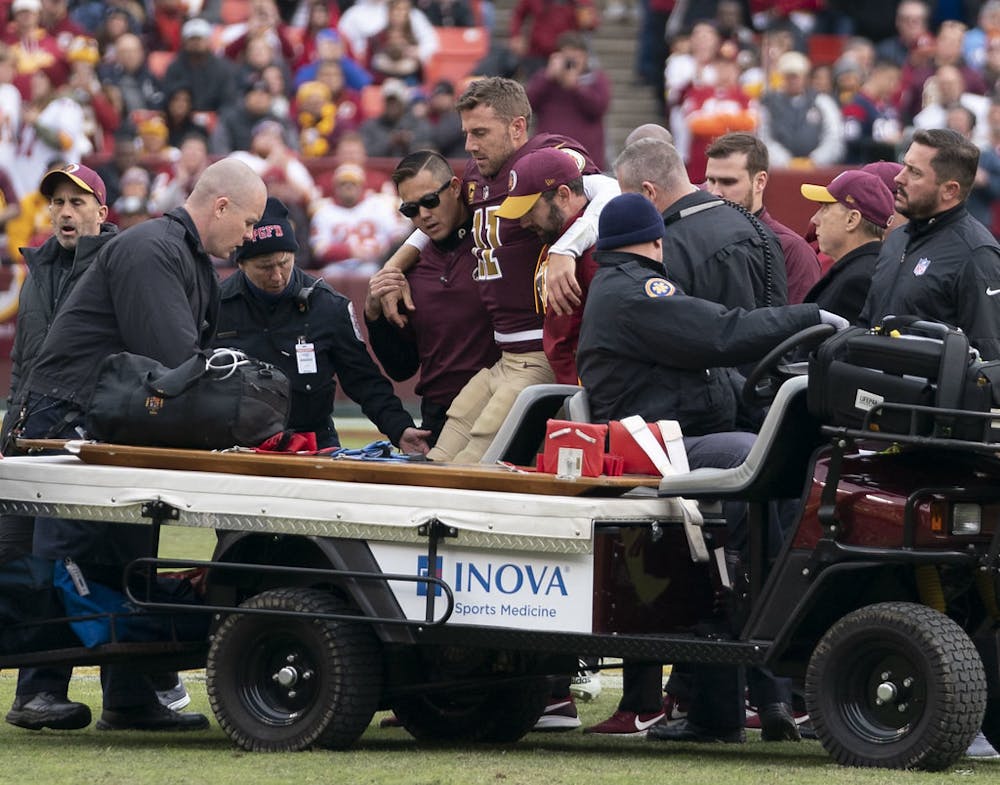
The 2020 version of just about everything has been terrible. The singular exception may be the NFL’s new regulations regarding the 2020-21 football season.
Due to the coronavirus (COVID-19) pandemic, the NFL made adjustments concerning safety protocol and roster management. From no preseason to the limited capacity of stadiums, which means almost no fans and virtually no home-field advantage, the NFL season looks extremely different.
Teams across the League took it upon themselves to implement their own measures to ensure optimal player health and team productivity. For instance, while in their respective facilities, players are required to wear Kinexon’s SafeTag device to monitor social distancing and contact tracing in the event that a player tests positive. Going into Week Two, the NFL reported zero positive cases for COVID-19, clearing the way for Sunday's games.
However, it is important to note that this plan is not foolproof. After their Week Three matchup this past Sunday, the Tennessee Titans and Minnesota Vikings shut down all in-person activities after the Titans reported that three players and five team personnel tested positive for COVID-19.
In the event of another COVID-19 outbreak, the NFL wants to ensure that there are enough available players on each team. One way they attempted to help was to adjust the rules regarding a team’s Injured Reserve (IR), which was implemented on Sept. 6 and lasts for the entirety of the 2020-21 season.
Teams are able to place any player on IR or the non-football injury/illness (NFI) list. In previous seasons, players on IR were required to sit out for a minimum of eight weeks before getting cleared to play. The new rules changed the eight-week minimum to a three-week minimum. As soon as the player returns to practice, the team then has three weeks to put him on the active roster. Teams are able to reactivate an unlimited number of players from IR.
How does this work in real life? Take the San Francisco 49ers. They currently have five of their 11 wide receivers on IR with an additional player being out for the season. What do they do? No more worrying about cutting depth in other places and carrying a dozen wide receivers until the starters are healthy. Put the injured players on IR and sign a waived player to replace them on the roster until they can return.
As for the players who test positive for COVID-19, there is even more leeway. They are not put on IR or the NFI but onto the Commissioner Exempt list. This list is known as the place for players facing off-field allegations of misconduct. There is no minimum or maximum stay on the Commissioner Exempt list. But placement on the list will always result in full payment so players who test positive will not face loss in compensation.
With teams being more aware of potential injuries and illnesses, the practice squad, originally made of 12 players, has been increased to 16 players. In addition, up to six of the players can be veterans — any player that has completed their two-year rookie contract. Teams can also “protect” four players on the practice squad from being signed to another team. If a player on the practice squad were to be signed to another team, the team must add the player to its 53-man roster.
Another practice squad change involves elevating players to the active roster. NFL teams are allowed to promote two of their practice squad players per week on game day, as special 54th and 55th men on the active roster. Teams can then return them to the practice squad the next day without them having to go through the usual waiver process. This can happen twice with each practice squad player.
So why have all these rule changes? These rules are based on hypotheticals, right? Well, Week Two brought massive injuries to big names, leading to huge implications. New York Giants running back Saquon Barkley and 49ers defensive end Nick Bosa suffered torn ACLs, ending their respective seasons.
Carolina Panthers running back Christian McCaffrey has a high ankle sprain. Denver Broncos quarterback Drew Lock has a sprained AC joint. Green Bay Packers wide receiver Davante Adams has a hamstring injury. Week Two alone had over 50 injured players in total. Add that to the overall list of injuries across the 32 teams, and you have roughly 500 injured players with varying degrees of injuries.
Hopefully teams can take advantage of the flexibility in the 2020-21 season and injured players can come back healthy. But who knows? In such uncertain times, everyone will have to wait and see.

















